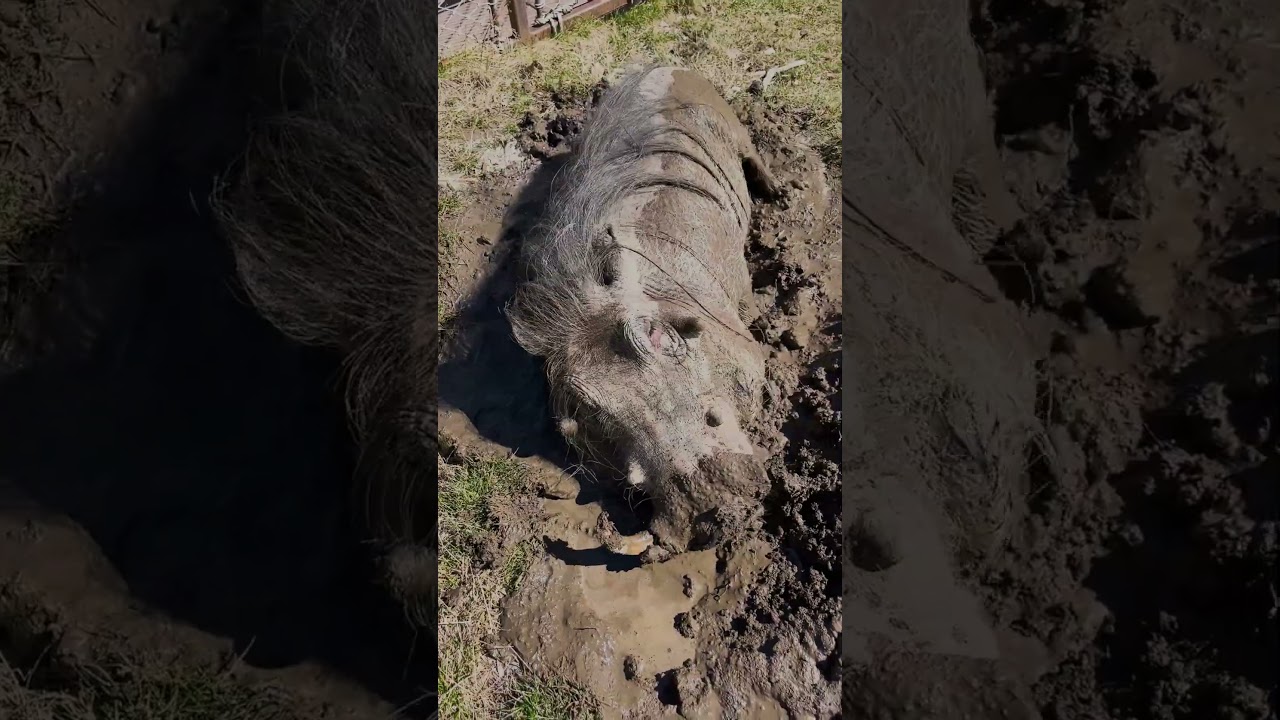– Celebrating the milestones in animal development and growth
– Zoological practices and animal welfare in captivity
– The importance of wildlife conservation and the role of zoos
– Educational outreach and public engagement through zoo exhibits
– The impact of social media in wildlife conservation and zoo management
When you visit a zoo and witness a playful young animal celebrate a birthday, it’s not just a moment of joy; it’s a testament to the concerted efforts in conservation, animal care, and education. Such is the occasion with Alexander’s 6th birthday, the “muddy boy” whose growth has been keenly observed by visitors and caretakers alike.
Zookeepers often mark these milestones to reflect the animal’s developmental progress and health in a controlled environment. In Alexander’s case, his affinity for mud baths, indicative of a natural behavior to keep cool and protect the skin from parasites, shows his comfort and well-being within the zoo habitat. These actions are not just playful indulgences but are essential aspects of species-specific behaviors that zoos strive to accommodate.
Understanding animal development is crucial for zoo management, as it involves monitoring their physical and psychological growth. Such growth is influenced by diet, habitat design, and social structures that zoos aim to replicate from the wild. As a zoo celebrates the growth of animals like Alexander, it celebrates the success of creating a nurturing environment that simulates natural conditions.
Zoo management entails the comprehensive care of animals and includes rigorous health checks, balanced nutrition, and environmental enrichment. Understanding animal behavior and needs becomes vital in this process. Enrichment activities also form a core component of animal care, helping to stimulate an animal’s senses and encourage natural behaviors that would be exhibited in wild contexts.
For Alexander, enrichment might involve adding novel objects to his enclosure, hidden treats that encourage foraging behavior, or the introduction of varying substrates like mud, water, or sand to dig in and explore. Such environmental enrichments serve dual purposes: to enhance animal well-being and to allow visitors to observe behaviors they might see in the wild.
One cannot discuss animal care without touching the overarching umbrella of wildlife conservation. Zoos play a pivotal role in educating the public about species conservation and the ecological challenges faced in the wild. By showcasing species like Alexander, zoos connect the public and wildlife, nurturing a sense of responsibility toward preserving these animals in their natural habitats.
Conservation programs often extend beyond zoo walls, with many institutions participating in international efforts to protect endangered species. They often support in-situ conservation initiatives that help protect animals where they naturally occur and ex-situ programs that may include captive breeding and reintroductions.
Educational outreach is another major facet of zoo operations. By cultivating a narrative around animals like Alexander, zoos can stimulate public interest and disseminate knowledge about species and conservation issues. Education comes in many forms, from informative plaques and interactive displays to trained docents who provide deeper insights into the lives of the animal’s residents.
The role of zoos in public education is particularly important as a counterbalance to the often negative portrayal of wildlife in media. By offering a more nuanced and scientifically grounded perspective, zoos can foster a more informed and compassionate audience. This can stimulate a domino effect, inspiring visitors to engage in conservation actions and advocate for environmental issues.
Finally, it’s worth acknowledging the role of social media in contemporary zoo management and wildlife conservation. The story of animals like Alexander is often shared across platforms, garnering attention and promoting a culture of caring for animals. Effective social media outreach can amplify conservation messages and generate support for zoo initiatives.
These platforms also provide a unique opportunity for interaction and education, allowing zoos to reach wide audiences with captivating stories about their animal inhabitants. For example, the visual impact of a video of Alexander enjoying his mud bath educates the public about species-specific behaviors and strengthens emotional connections with animals, fostering a supportive community for conservation.
In documenting and sharing milestones like Alexander’s 6th birthday, zoos can offer a window into the nuanced needs of each species they care for. Though we celebrate one muddy boy, the implications of his well-being represent a much broader commitment to wildlife care and conservation. Engaging the public through these celebrations reminds us of our shared responsibility to sustain our planet’s biodiversity, and to support the institutions that serve as modern-day arks for species at risk.
*****
Source Description
What could be better than a muddy birthday warthog wallow? Clearly, nothing.
#KeeperCam

